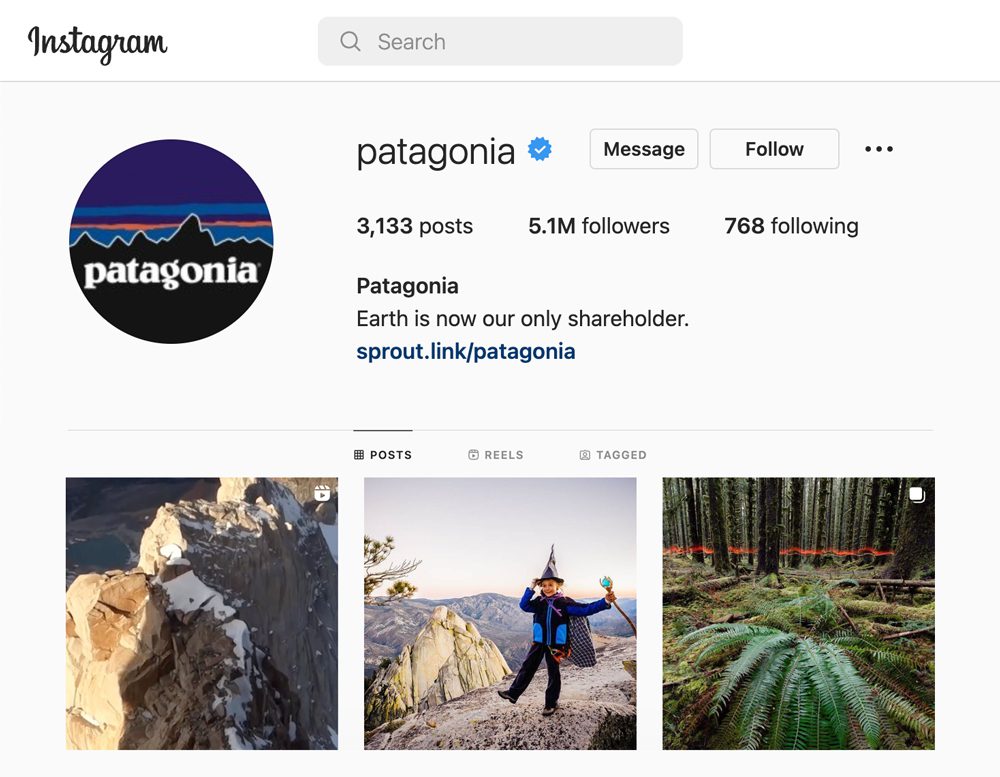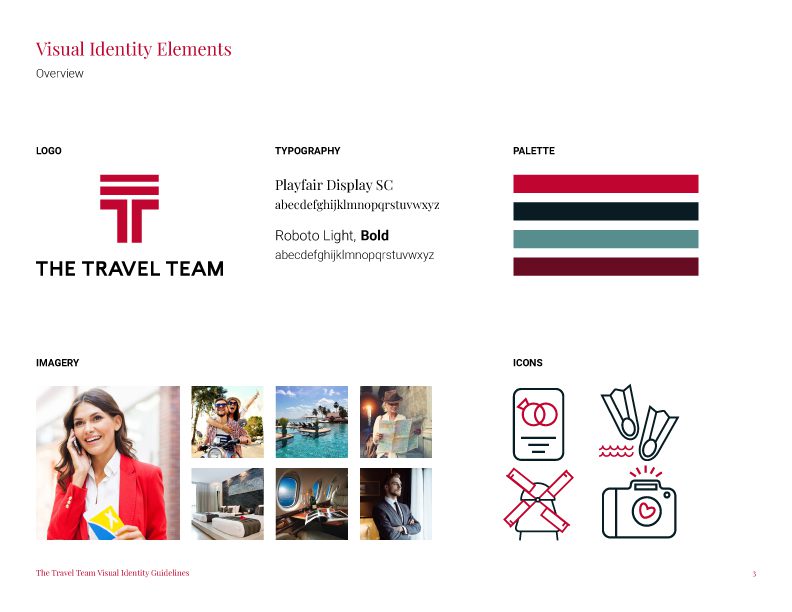There’s much more to building a brand than just creating a logo and placing it on stationery, packaging or merchandise. Because consumers are so active online—and sometimes only online—your entire digital footprint is an extension of your brand. That means your website, Google My Business profile, social media accounts and digital ads all impact a customer’s perception of your brand. Branding consistency is key.
Branding consistency involves portraying your company, including values, messages and images, the same across all marketing channels and campaigns. Being consistent across channels builds recognition, which creates greater trust among consumers that can translate to more customers and revenue. So how can you build and maintain brand consistency?




EXAMPLE
One way Patagonia Outdoor Clothing & Gear maintains their brand consistency is by using nature and open air photography across channels.
Have a Message Backed by Brand Guidelines
What does your company stand for? Whatever your mission statement is, your brand should revolve around it. Your branding elements visually reinforce these ideals. When we say “branding elements,” we’re not just talking about your logo either. The fonts and colors you use, the style of your photography, the voice you use in your copywriting and how you present your competitive advantages all factor into your persona.
Place these components front and center on your website and online accounts. This helps new visitors get a feel for your business from their very first interaction, no matter where it occurs.
All of your branding elements should match across every web page and social media channel. This way, clients know they are interacting with the right company online. Inconsistency can lead to a lack of trust (or, honestly, just confusion) between your company and potential customers.


Understand Your Target Audience
Building a brand isn’t just about your company. It’s also about your audience, which likely isn’t (and shouldn’t be) everyone under the sun. To build a brand that resonates with your specific audience, you need to know who they are, what they care about, and how they shop, just to name a few examples. Remember that not everyone is going to fit into your target audience and that it’s ok.
Only once you have a concrete understanding of your target audience can you create a brand that truly connects with them. This is also why consistency matters. Any target audience relies on dependability and authenticity to gain an understanding of and trust in your business. Deviating from the brand that you’ve worked to establish or failing to keep messaging clear prevents this awareness and hinders your growth.
Take Action on Behalf of Your Brand
Every business action you take should align with your brand. Social media posts and engagements, website content, online listings and any other components of your digital footprint should be tailored to the stances you take and the values you believe in. Customers are attracted to brands that let their personalities shine through their products or services, physical spaces and digital properties. Try to maintain regular content updates and posts on your online channels. This will keep your company and your brand fresh in your audience’s mind.
Taking action also means addressing customer concerns. Part of your brand is your reputation, which means part of building your brand is reputation management and customer service. Always approach reviews—whether positive or negative—quickly, kindly and with solutions. This can turn negative interactions into positive ones and prove that you’re the real deal.
Interact with Your Audience
Authenticity is crucial to branding success. It starts with building real relationships with your audience. Share your message on the marketing channels where your target audience already spends time. Consider how people use a specific platform when deciding whether or not to build a presence for your company. Facebook is the largest social platform with users that trend older than Snapchat, Instagram, Twitter or TikTok. TikTok and Instagram’s highly visual feeds are adored by younger social media users. Each digital platform, from LinkedIn to your own website, has a purpose and a personality. It’s up to you to decide which ones will help you amplify your brand.
Conduct Brand Audits
As you begin to implement a brand consistency strategy, you’ll want to take some time to be critical of your efforts and make adjustments as needed. Take a step back and interact with your business as if you’ve never heard of it before. Use templates to keep your imagery consistent across social media, in emails and on your website. Double-check your social posts for grammatical errors and pass on sharing things that don’t match your brand’s voice or style. Organizing the small details will add up to big improvements for your business.